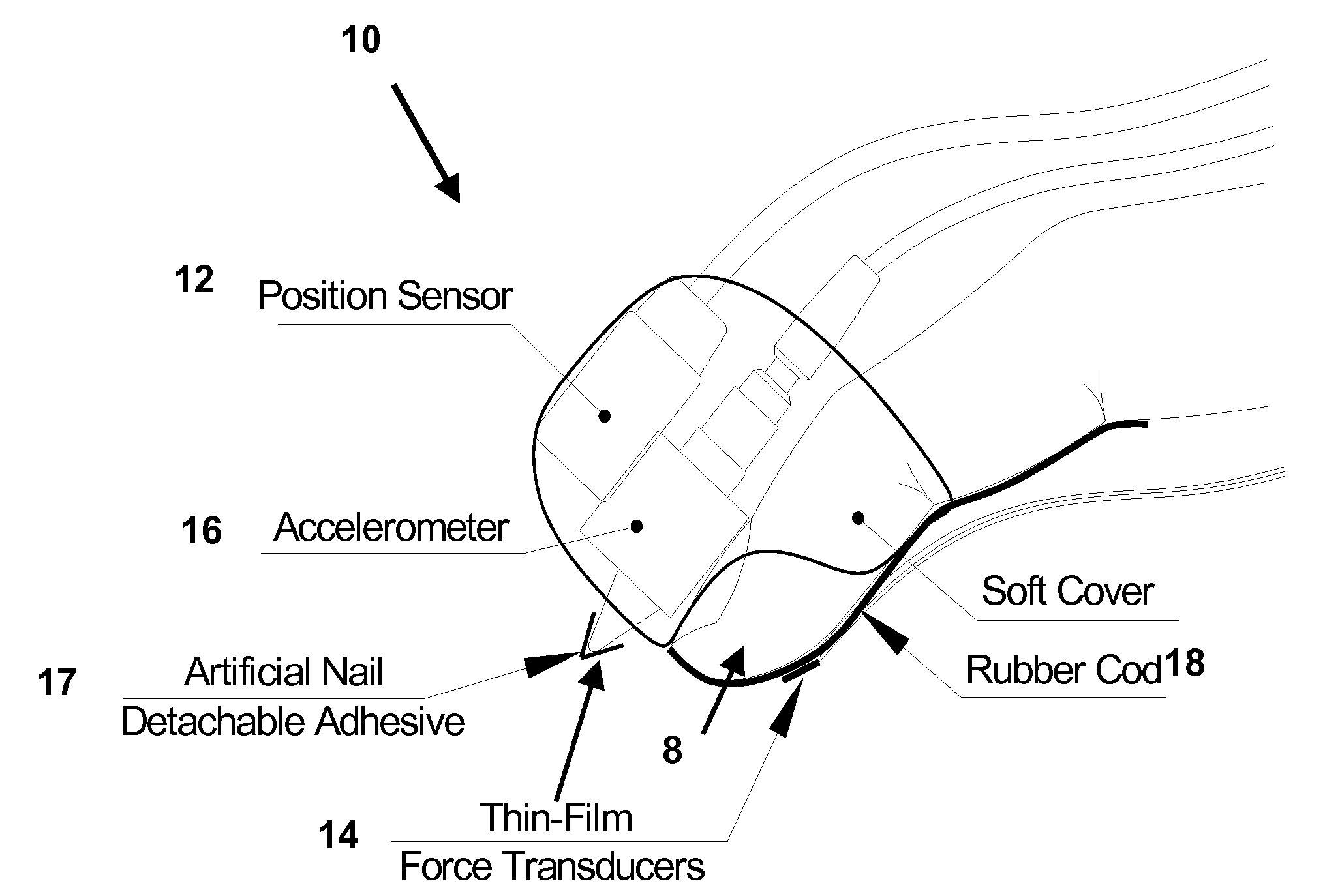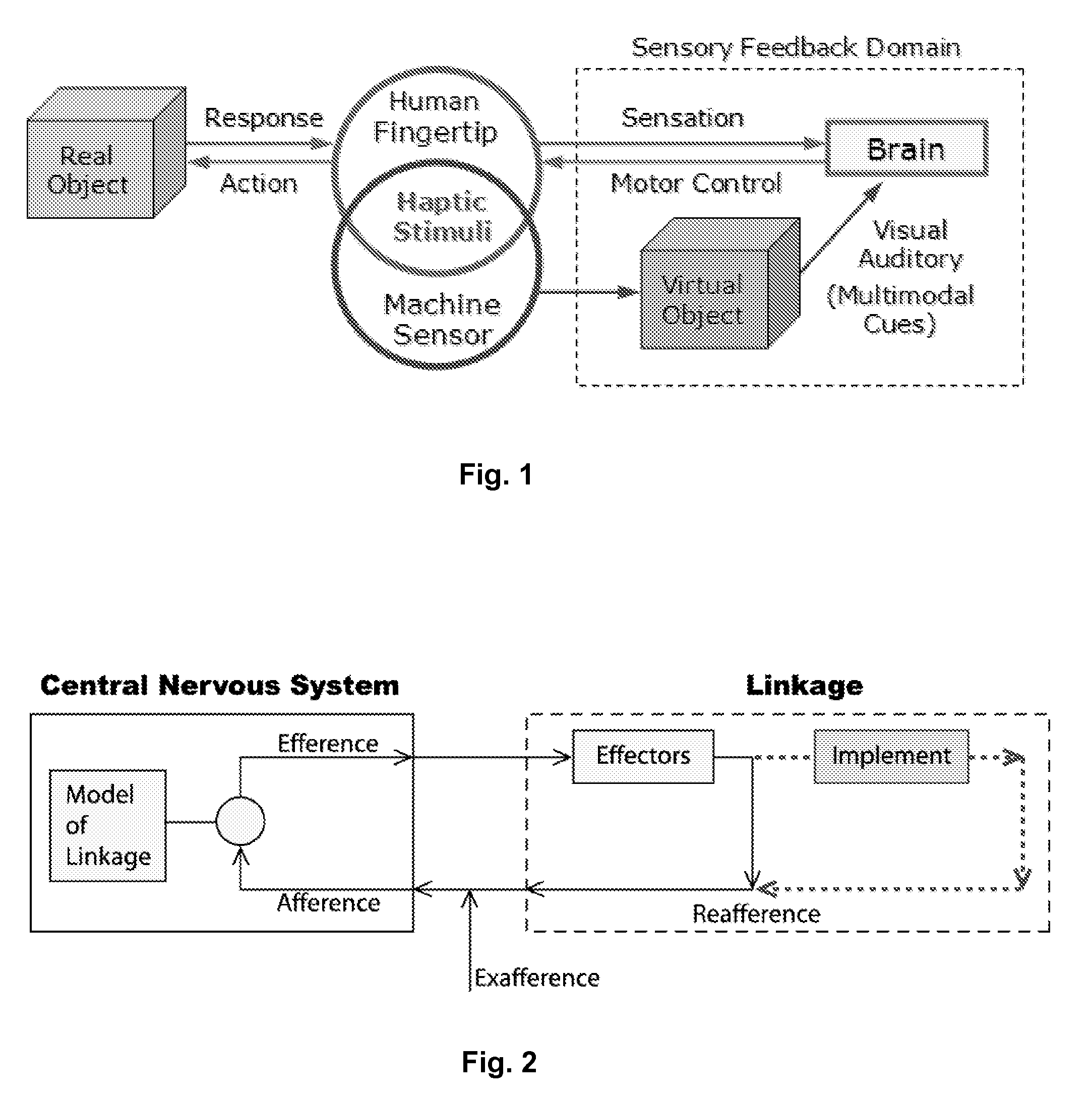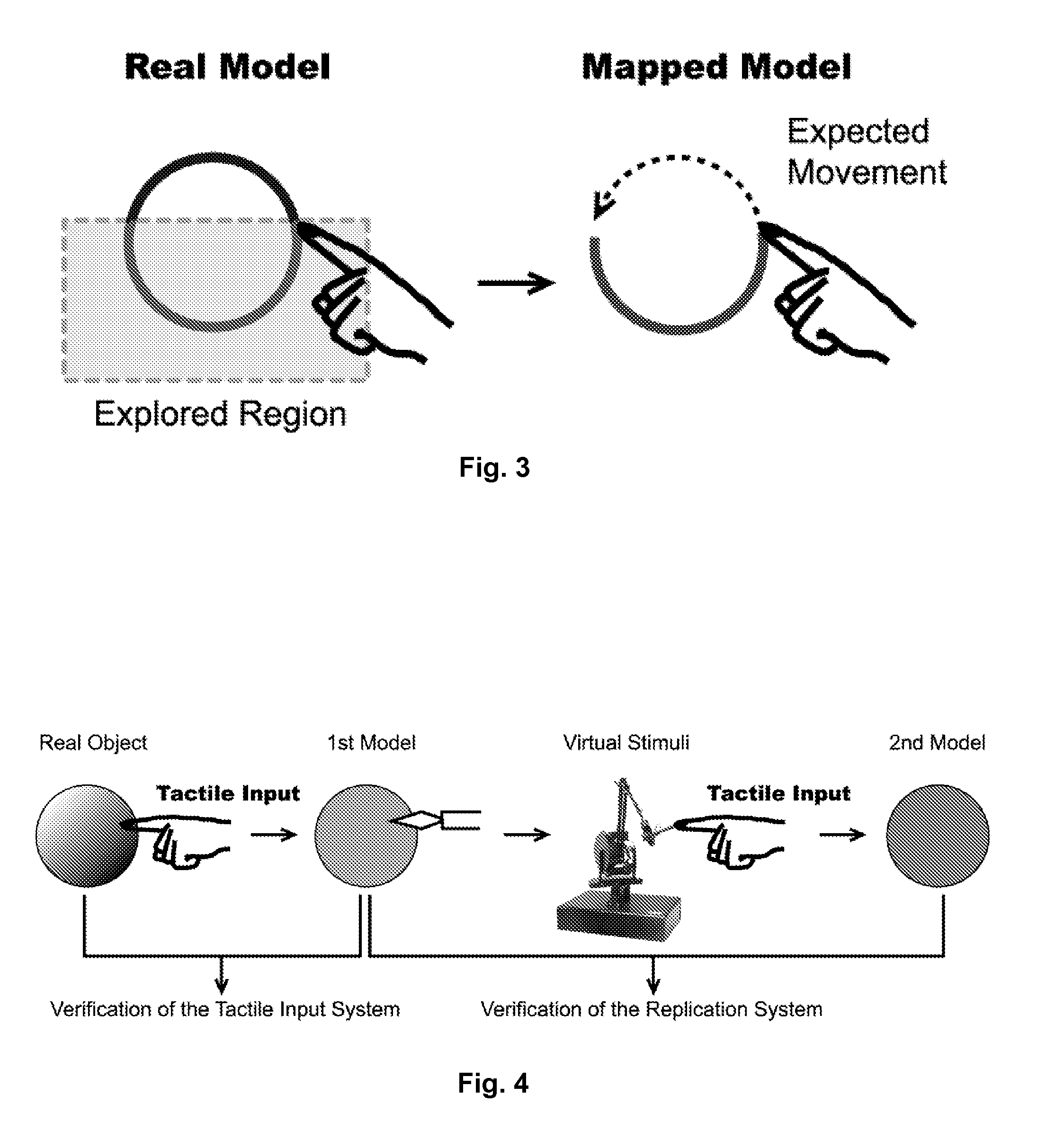Active Fingertip-Mounted Object Digitizer
a digitizer and fingertip technology, applied in the field of haptic sensing, can solve the problems of user's tactual activities having to be ultimately restricted, touch is volatile and has a very short life in our memory,
- Summary
- Abstract
- Description
- Claims
- Application Information
AI Technical Summary
Benefits of technology
Problems solved by technology
Method used
Image
Examples
Embodiment Construction
[0136]As suggested previously, the present invention involves many issues of human interaction studies. In particular, the invention involves three specific engineering fields in methodology. They are tactile sensing (with the active touch paradigm), biomechanical study (kinesthetic sensing), and virtual reality implementation (see FIG. 5).
[0137]Firstly, the invention embodies the active touch paradigm to conventional passive methods of tactile sensing. In the previous studies (Mayrose, 2000; Kamerkar, 2004; Smalley, 2004; Mehta, 2005), the sensing methodology entirely depended on the contact condition. That is, in passive touch, the contact is the prerequisite for all sensing activities; nothing happens to machine until the onset of contact. On the contrary, for the active touch paradigm of the present invention, the machine always keeps track of fingertip activities. Here, the interaction between the finger and object is the most important—the system needs to watch and recognize b...
PUM
 Login to View More
Login to View More Abstract
Description
Claims
Application Information
 Login to View More
Login to View More - R&D
- Intellectual Property
- Life Sciences
- Materials
- Tech Scout
- Unparalleled Data Quality
- Higher Quality Content
- 60% Fewer Hallucinations
Browse by: Latest US Patents, China's latest patents, Technical Efficacy Thesaurus, Application Domain, Technology Topic, Popular Technical Reports.
© 2025 PatSnap. All rights reserved.Legal|Privacy policy|Modern Slavery Act Transparency Statement|Sitemap|About US| Contact US: help@patsnap.com



